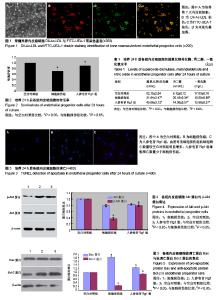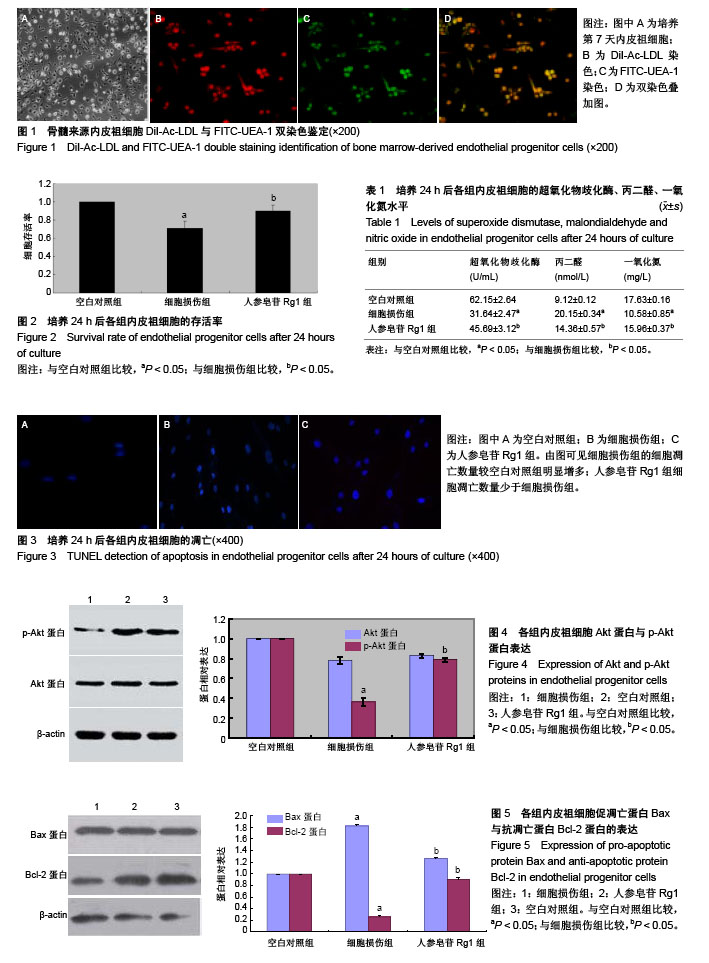| [1] Shami A, Tengryd C, AsciuttoG,et al. Expression of fibromodulin in carotid atherosclerotic plaques is associated with diabetes and cerebrovascular events. Atherosclerosis. 2015;241(2):701-708.[2] 郭鑫,毕海宁,盖晴.血凝集素样氧化型低密度脂蛋白受体l与动脉粥样硬化性疾病的研究进展[J].中风与神经疾病杂志, 2018,35(1):86-90.[3] Sedding DG, Boyle EC, Demandt JAF,et al.VasaVasorum Angiogenesis: Key Player in the Initiation and Progression of Atherosclerosis and Potential Target for the Treatment of Cardiovascular Disease.Front Immunol. 2018;9:706.[4] Sato K, Yamashita T, Shirai R, et al. Adropin Contributes to Anti-Atherosclerosis by Suppressing Monocyte-Endothelial Cell Adhesion and Smooth Muscle Cell Proliferation.Int J Mol Sci. 2018;19(5): E1293.[5] 李丹,李玉洁,杨庆,等.血管内皮功能障碍与动脉粥样硬化研究进展[J].中国实验方剂学杂志,2012,18(8):272-276.[6] 刘红利.以脉络学说为指导探讨内皮细胞损伤对AS发病影响及通心络干预作用研究[D].南京:南京中医药大学,2016.[7] Wu TW, Liu CC, Hung CL, et al. Genetic profiling of young and aged endothelial progenitor cells in hypoxia.PLoS One. 2018; 13(4):e0196572.[8] Kazenwadel J, Harvey NL.Lymphatic endothelial progenitor cells: origins and roles in lymphangiogenesis.CurrOpinImmunol. 2018; 53:81-87.[9] 饶璇,李元建.内皮细胞损伤与修复的研究进展[J].中国动脉硬化杂志, 2017,25(5):531-535.[10] 李中轩,张颖倩,陈韵岱.内皮祖细胞在缺血性心脏病治疗中的研究进展[J].中国循证心血管医学杂志, 2017,9(7):873-875,878.[11] 庹磊,赵攀,徐洁,等.西格列汀对Ⅱ型糖尿病大鼠骨髓内皮祖细胞衰老的影响及可能机制[J].解剖学杂志,2017,40(2):132-136.[12] 谭强,李广平,王庆胜,等.四氧嘧啶诱导的糖尿病对兔骨髓内皮祖细胞及循环内皮祖细胞功能的影响[J].中华医学杂志, 2017,97(28): 2186-2193.[13] 杨莹莹,陈秋娟,袁文,等.不同浓度雌激素对急性期高血压脑出血患者的内皮祖细胞功能及衰老的影响[J].山西医药杂志, 2017,46(3): 250-253.[14] 陈圆圆,程蔚蔚.人类血管内皮祖细胞与妊娠期高血压疾病的研究进展[J].中华围产医学杂志,2017,20(2):139-142.[15] 夏文豪,张斌,梁建文,等.增龄对内皮祖细胞数量和功能活性的影响及与血管内皮功能的关系[J].中国老年学杂志, 2016,36(13): 3149-3151,3152.[16] 黄文,孔辉, 解卫平,等. 循环内皮祖细胞在肺动脉高压形成中的作用及治疗学应用前景[J].国际呼吸杂志, 2013,33(17):1351-1355.[17] 向玥,陈粼波,姚辉,等. 人参皂苷Rg1对D-半乳糖所致衰老小鼠海马的保护机制[J].中草药,2017,48(18): 3789-3795.[18] Li X, Li M, Li Y, et al. Juan Wang. Cellular and molecular mechanisms underlying the action of ginsenoside Rg1 against Alzheimer’s disease. Neural Regen Res. 2012; 7(36): 2860-2866.[19] 彭程飞,李洋,刘丹,等.人参皂苷Rg1抑制大鼠急性心肌梗死后心肌纤维化[J].中国循环杂志, 2017,32(z1): 27.[20] 郝微微,温红珠,马贵同,等.人参皂苷Rg1对DSS诱导溃疡性结肠炎小鼠凝血功能的调节作用[J].中国中西医结合消化杂志, 2013,21(5): 238-242.[21] 贾道勇.人参皂苷Rg1对衰老大鼠胸腺结构与功能的影响;2.人参皂苷Rg1联合阿糖胞苷对白血病细胞KG1α凋亡的影响[D].重庆:重庆医科大学,2015.[22] 陈协辉,梁进杰,刘新荪,等.人参皂苷Rg1对大鼠心肌梗死后心肌血管再生的影响[J].心血管康复医学杂志,2017,26(3):245-250.[23] Deng Y, Zhang T, Teng F, et al. Ginsenoside Rg1 and Rb1, in combination with salvianolic acid B, play different roles in myocardial infarction in rats.J Chin Med Assoc. 2015;78(2):114-120.[24] Deng J, Wang YW, Chen WM, et al. Role of nitric oxide in ginsenosideRg(1)-induced protection against left ventricular hypertrophy produced by abdominal aorta coarctation in rats.Biol Pharm Bull. 2010;33(4):631-635.[25] 方晓,王康康,高维陆,等.直接贴壁法体外分离培养大鼠骨髓内皮祖细胞[J].安徽医科大学学报,2016,51(11):1696-1699.[26] Asahara T, Murohara T, Sullivan A, et al. Isolation of putative progenitor endothelial cells for angiogenesis.Science. 1997; 275(5302):964-967.[27] Verma I, Syngle A, Krishan P.Predictors of endothelial dysfunction and atherosclerosis in rheumatoid arthritis in Indian population. Indian Heart J. 2017;69(2):200-206.[28] 高帅芸.内皮祖细胞与动脉粥样硬化相关性研究进展[J].长治医学院学报, 2015,29(5): 390-393.[29] 王孟阳,段发亮,吴京雷,等.人参皂苷对创伤后应激障碍大鼠海马神经元的保护作用机制研究[J].华中科技大学学报(医学版), 2018, 47(1):69-72.[30] 吉瑜虹,黄伸伸,巩秀丽,等.人参皂苷预处理对急性肺损伤大鼠肿瘤坏死因子-α和白细胞介素-6及白细胞介素-10水平的影响[J].中国临床药理学杂志,2017,33(16):1552-1555.[31] 谢靖,梁华峰,祁鸣,等.人参皂苷RH2对MCAO大鼠血管新生的调节[J].中国病理生理杂志,2018,34(1): 112-117.[32] 连瑞珍.内皮功能障碍、氧化应激与心肌缺血再灌注损伤[J].疾病监测与控制,2013,7(7):416-419.[33] 吴利平.氧化应激与心血管疾病关系的研究进展[J].中国处方药, 2017,15(7):9-10.[34] 毛文星,李冰,王志梅,等.氧化应激、血管内皮功能障碍与高血压[J].现代生物医学进展,2014,14(19):3770-3774.[35] 刘佳,李肖楠,孙思铭,等.硫酸锌对血管内皮细胞氧化应激保护作用的研究[J].中国免疫学杂志, 2017,33(2):170-173.[36] 农毅清,蒋林,罗宇东,等.常春卫矛提取物对H2O2诱导的血管内皮细胞损伤的保护作用[J].中国药师, 2017,20(5):805-808,859.[37] 李永刚.黄连素对Ⅱ型糖尿病早期患者内皮细胞超氧化物歧化酶和一氧化氮水平的影响[J].中国保健营养, 2018,28(2):266-267.[38] 石晓明,赵伟,杨永宾,等. 法舒地尔联合丹参对下肢动脉硬化闭塞症患者应激状态的影响[J].河北医药,2018,40(4):542-546.[39] 林文新,马阮昕,冯真英. 川芎嗪对过氧化氢诱导PC12细胞氧化应激的作用[J].江西中医药,2018,49(2):29-31.[40] 张丽娜.心肌细胞凋亡与PI 3K/Akt信号途径表达及其调控机制的研究[J].南昌大学学报:医学版, 2010,50(5):119-121. |

